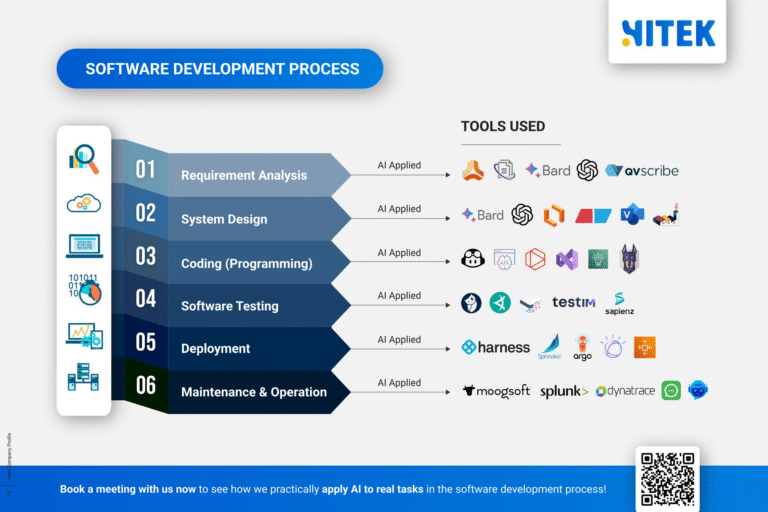In software development, the term MVP is thrown around like confetti at a tech conference. But what does it mean, and why is it so crucial for businesses in Australia? Whether you’re a startup founder in Sydney, a project manager in Melbourne, or a developer in Brisbane, understanding the concept of an MVP can be a game-changer for your next project.
Let’s break it down.
Contents
ToggleWhat is an MVP in Software Development?
MVP stands for Minimum Viable Product. It’s a development strategy where you create an essential product version with just enough features to satisfy early adopters. The goal? To test your idea in the real world, gather feedback, and iterate before investing time and money into a full-scale product.
Think of it as a “test drive” for your software. Instead of building a Ferrari from scratch, you start with a reliable go-kart. It might not have all the bells and whistles, but it gets you on the track and helps you figure out what works and doesn’t.
Why is an MVP Important for Australian Businesses?
Australia’s tech scene is booming, with cities like Sydney and Melbourne becoming hubs for innovation. But with great opportunity comes fierce competition. An MVP allows businesses to:
- Validate Ideas Quickly: Instead of spending months (or years) building a product no one wants, an MVP helps you test your concept with real users.
- Save Time and Money: By focusing on core features, you avoid unnecessary development costs.
- Attract Investors: A working MVP demonstrates your idea’s potential, making it easier to secure funding.
- Adapt to Market Needs: Australian consumers are tech-savvy but demanding. An MVP lets you refine your product based on user feedback.
For example, Canva, one of Australia’s most successful startups, started as a simple design tool before evolving into the powerhouse it is today.
Key Characteristics of a Successful MVP
Not all MVPs are created equal. To make yours stand out, it should have:
- Core Functionality: Focus on the features that solve the primary problem for your users.
- User-Friendly Design: An essential product should be intuitive and easy to use.
- Scalability: Build with future growth in mind.
- Measurable Metrics: Define success criteria, such as user engagement or conversion rates.
How to Build an MVP: A Step-by-Step Guide
1. Identify the Problem
Start by understanding your target audience’s pain points. For instance, if you’re building a fitness app, your problem might be helping Australians stay active despite busy schedules.
2. Define Your Core Features
List the essential features that address the problem. For a fitness app, this could include workout tracking, goal setting, and progress reports.
3. Build the MVP
Work with a skilled development team to create a functional prototype. Tools like Figma for design and GitHub for version control can streamline the process.
4. Test and Gather Feedback
Launch your MVP to a small group of users. Use surveys, interviews, and analytics to gather insights.
5. Iterate and Improve
Refine your product based on feedback. Remember, the MVP is just the beginning—your final product will evolve.
Common Mistakes to Avoid
While building an MVP, it’s easy to fall into traps like:
- Overloading with Features: Stick to the essentials.
- Ignoring User Feedback: Your users are your best source of insight.
- Skipping Market Research: Understand your competition and target audience.
MVP vs. Prototype: What’s the Difference?
It’s easy to confuse an MVP with a prototype, but they serve different purposes.
| Aspect | MVP | Prototype |
|---|---|---|
| Purpose | Test a product in the market | Visualize an idea |
| Functionality | Fully functional | Limited or no functionality |
| Audience | Real users | Stakeholders or investors |
| Development Time | Longer | Shorter |
Real-World Examples of Successful MVPs
- Dropbox: Started with a simple video demonstrating its file-sharing concept, which helped validate demand before development.
- Airbnb: Launched with an essential website offering short-term rentals during a conference in San Francisco.
- Spotify: Began as a desktop app with limited features before expanding into the global platform we know today.
These examples show how an MVP can pave the way for massive success.
Why Australian Businesses Should Embrace MVPs
Australia’s tech ecosystem is thriving, but competition is fierce. By adopting an MVP approach, businesses can:
- Reduce Risk: Test ideas without committing significant resources.
- Stay Agile: Adapt to changing market demands quickly.
- Build Better Products: Create solutions that genuinely resonate with users.
Whether you’re developing a new app, SaaS platform, or e-commerce site, an MVP can help you confidently navigate the complexities of software development.
Ready to Build Your MVP?
If you’re an Australian business looking to bring your software idea to life, start with an MVP. It’s the most innovative way to validate your concept, save resources, and set yourself up for long-term success.
Need help getting started? Partner with a trusted development team that understands the Australian market. With the right strategy, your MVP could be the next big thing in tech.
What’s your take on MVPs? Have you used this approach in your business? Share your thoughts in the comments below!









